Einstein's Prediction
Gravitational waves are ripples in spacetime that propagate at the speed of light. They were predicted by Albert Einstein in 1916 as a consequence of his general theory of relativity. Their existence was indirectly confirmed in the 1980s by R. Hulse and J. Taylor, who observed the neutron star binary PSR1913+16 over more than ten years. They found that the orbital period of the system was gradually decreasing due to the emission of gravitational waves, a discovery that earned them the Nobel Prize in Physics.
On September 14, 2015, the LIGO detectors in the United States successfully made the first direct detection of gravitational waves, originating from the merger of two black holes. This groundbreaking discovery marked the dawn of gravitational wave astronomy--a completely new field of research.

Sources of Gravitational Waves
Gravitational waves are emitted by accelerating masses. However, only extremely massive and dense objects undergoing strong acceleration produce waves strong enough to be detected. The following astronomical phenomena are known or expected sources of gravitational waves:
- Orbital motion of compact binary objectsartist's renditionNAOJ
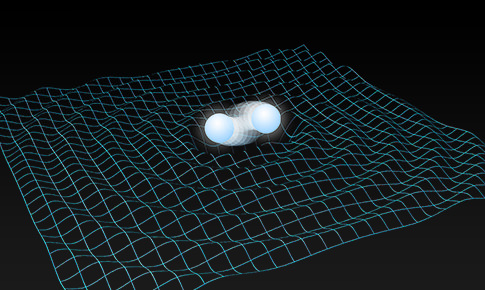
- Collision and merger of compact binariesartist's renditionNAOJ
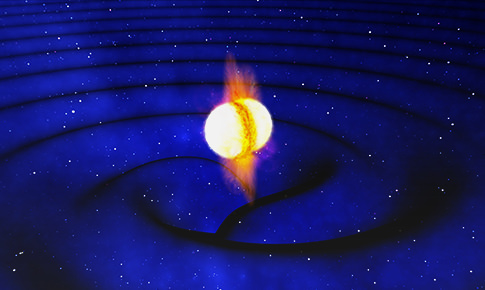
- Spinning neutron starsartist's renditionNASA

- Supernova explosionsartist's renditionNAOJ
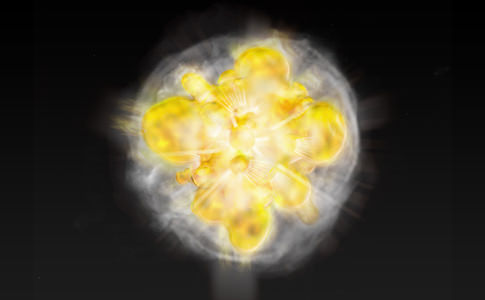
- Gravitational waves from the early universeNAOJ

Detection of Gravitational Waves
Experimental efforts to detect gravitational waves began in the 1960s with resonant bar detectors developed by Joseph Weber. Many groups around the world followed this approach, but today, laser interferometric detectors have become the mainstream method. Gravitational waves cause tiny changes in the proper distance between free masses. In a laser interferometer, these distance changes are measured using laser light reflected between suspended mirrors. The mirrors are hung like pendulums to behave as free masses at high frequencies.
The basic configuration used in gravitational wave detection is the Michelson interferometer. A laser beam is split into two orthogonal paths by a beam splitter, reflected by mirrors at the end of each arm, and then recombined to produce interference. A photodetector measures the resulting light intensity. If gravitational waves pass through the interferometer, the relative arm lengths change, altering the interference pattern. By monitoring the light intensity at the detector, the presence of gravitational waves can be inferred.
- Concept of laser interferometry for gravitational wave detection
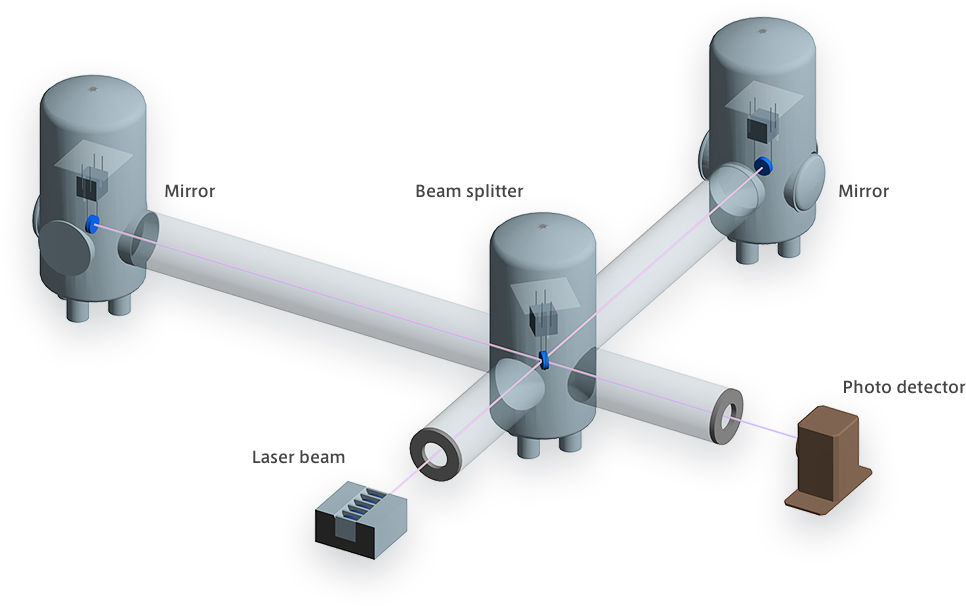
Ground-Based Interferometric Detectors
Laser interferometry is currently the most widely used method in ground-based gravitational wave detectors. The longer the interferometer arms, the higher the sensitivity to gravitational waves, making large-scale facilities essential.
The 300-meter TAMA300 laser interferometer is located on the NAOJ Mitaka campus. It began observations in 1999, ahead of other large-scale interferometers, achieving world-leading sensitivity and demonstrating long-term observation. LIGO (USA) and Virgo (Italy/France) are kilometer-scale interferometers, while GEO600 (Germany) is a 600-meter detector focusing on advanced technologies. These first-generation detectors started operations in the early 2000s.
LIGO and Virgo have since been upgraded to second-generation configurations, resulting in successful detections of gravitational waves. In Japan, KAGRA--a kilometer-scale interferometer located underground in Kamioka, Gifu Prefecture--is undergoing sensitivity enhancements in preparation for further detections.
- Central control room of TAMA300

- Mirror suspended by wiresPhoto by Nikon Gijutsu Kobo
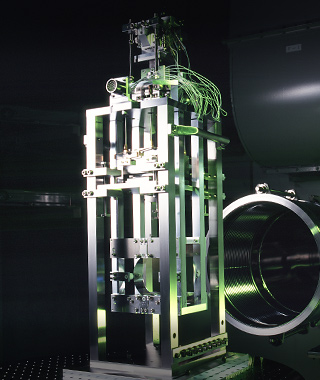
Space-Based Interferometric Detectors
Ground-based detectors are limited in their ability to detect low-frequency gravitational waves due to size constraints and various low-frequency noise sources such as seismic activity. To observe gravitational waves from the early universe or massive black hole mergers--both of which emit low-frequency signals--space-based detectors are proposed.
The European eLISA project, led by the European Space Agency (ESA), plans to deploy a triangular interferometer with million-kilometer-long arms using three spacecraft in heliocentric orbit. Japanese researchers are developing a complementary project called DECIGO, a 1,000 km space-based interferometer targeting a different frequency band. Researchers at NAOJ are actively involved in the technological development for DECIGO.
